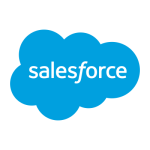What is our primary use case?
Primarily, we've been using it in a localized way, but it's becoming more and more of an enterprise tool as the knowledge is shared throughout the team and department. But primarily it has been used for ETL-type work. My team is data integration and we use it to schedule our Informatica PowerCenter workflows as well as DataStage. We also use it for a lot of file transfers, such as SFTP stuff. And we've recently explored some API calls that we can use to interface with Qlik.
How has it helped my organization?
It's really helpful with scheduling and setting up dependencies. I primarily use it with our data warehouse and there are a lot of dependencies. First you have to load XYZ tables before it's filtered and presented in the reporting layer. It really helps to maintain those constraints and dependencies.
We use it to schedule our data warehouse. We use the Informatica PowerCenter tool and we have Oracle's out-of-the-box Data Warehouse so there are a lot of workflows that need to run, either sequentially or that are dependent on one another. ActiveBatch really handles hundreds of workflows on a schedule and it definitely maintains those constraints. I've never seen a failure to trigger a job at an appropriate time. We definitely rely on it heavily in that regard.
ActiveBatch was originally purchased as a scheduler, to enable us to execute DataStage jobs, but once we started to grow, and our use cases started to vary, we realized that we could use the pre-built SFTP capabilities. Previously, we had to code things in our DataStage tool where it wasn't as intuitive. You really had to get into the programming. But a business user can certainly use ActiveBatch to set up an SFTP connection, as long as they have the information. It's pretty easy to do that. Moving SFTP files around is certainly valuable to the business because I work for a hospital. The health system is definitely reliant on the data that we move around, and ActiveBatch really executes the ETL workflows that actually transform and move the data. We rely on it to appropriately schedule and execute those workflows to get the data to the right place.
The solution has become our center of excellence for all things related to automation in our organization. We started with DataStage and then we acquired the Informatica tool and we use ActiveBatch for that. Now we're seeing we can use the scheduling capabilities of ActiveBatch to call our Qlik refresh applications. We're starting to expand ActiveBatch as an enterprise solution and other departments are also finding that they can do all the remote scripting that they used to have to do manually, or that operations would have to do, in ActiveBatch and it will take care of that on a schedule, instead of wasting man-hours.
It also provides proactive error detection, even in real time. Almost all of our workflows have a lot of notifications set up to either email, or page, or create a ServiceNow ticket if there is a failure. We're notified immediately if something's not working as it should. That has prevented problems from becoming fires. If we didn't get those notifications, if our data warehouse was not operating as we expected it to, that certainly would cause some problems.
In addition, in terms of workflow completion times, I don't know what we would have done without it, as far as scheduling goes. It would probably be a lot more complicated to schedule a lot of our workflows through these other products that are more focused on the data manipulation and are not as concerned with scheduling. So to be able to schedule and set up dependencies has been pretty valuable for us. It has improved our workflow completion rates by five hours per day, because we execute our workflows daily. It has also reduced our man-hours by something like 60 percent. It has a lot of intuitive stuff so that instead of building out code for it, we can just plug-and-play with it. You put in the right parameters and it takes care of it for you.
We have definitely been able to re-assign staff to more value-added activities as a result of using ActiveBatch. Something that has been very valuable for us is that we have been able to build our solutions in a way that, if they fail, ActiveBatch actually tries to restart them itself, without any manual intervention. If that fails it goes to our operations team. Before, that was something that our ETL or data integration team had to handle ourselves. Being able to push those issues to ActiveBach and to the other team, it has really saved us a lot of time.
What is most valuable?
We do a lot of very specific scheduling. You could do it as simply as, "Hey, run this every day at six o'clock," or you could do something like an exact date and exclude bank holidays. It has a very robust scheduling aspect.
We use a lot of SFTP stuff. With version 11 and version 12 they came out with a managed file transfer. They have a lot of pre-programmed "job steps" so that you don't have to develop custom code. You can just say, "Copy file. SFTP file." They build up a lot of the common uses that you would be looking to develop yourself.
We leverage the solution's native integrations regularly. We have to get files from a remote server outside the organization, and even send things outside the organization. We use a lot of its file manipulation and SFTP functionality for contacting remote servers.
ActiveBatch also has a lot of pre-built looping structures, reading files, looping-if-branch; basic programming concepts are pre-built for you and robust. That's definitely nice.
It's very easy to use. I was self-taught before any training was available for our company. It's very easy to learn to use yourself. I have a technical background but even some of our business users, with some light training, would be able to navigate and use the tool very easily. Things like the copy files or move files are very intuitive.
It's extremely flexible. In addition to that pre-built functionality and the ability to create API calls, it allows us to create our own service library. That wasn't default but they said "Hey, we have this package where you can build your own library." It also has some different scripting of job steps. If I want to use PowerShell to achieve something that might not be out-of-the-box, I've been able to leverage that utility to achieve whatever we're looking to do. If there's a problem that needs a solution that may not be available in our ETL products, my first go-to is ActiveBatch to do some scripting.
What needs improvement?
Between version 10 and version 12 there was a change. In version 10, they had each object in its own folder. But on the back end, they saw it at the root level. So when we moved over to version 12, everything was in the same area mixed together. It was incredibly difficult and we actually had to create our own folders and move those objects—like schedules, jobs, user accounts—and manually put those into folders, whereas the previous version already had it. They did allow us to filter so that we could see things, but that was not nearly as effective as what we had become used to having.
For how long have I used the solution?
I've been using ActiveBatch Workload Automation for three years.
What do I think about the stability of the solution?
It's very stable. Any of the issues that we tend to see are related to the product that ActiveBatch is trying to talk to. For example, we use the web service for our Informatica tool, and issues we see are on the PowerCenter side, not the ActiveBatch side.
What do I think about the scalability of the solution?
I know it has features for scaling, so as we continue to build it out as an enterprise tool we're able to use what they call a Virtual Root. The team using it doesn't see everybody else's work, they only see what's relevant to them. That's really neat.
We went from one team using it to some four or five teams using it now. The other teams are just starting, but I don't see any collisions. It's easy to grow.
We have about 30 users of the solution, including developers, solution architects, operations, trainers, administrators, and data modelers.
How are customer service and technical support?
Their support is good. For every support question I've raised they've had very responsive teams. To date, we haven't submitted an issue that they haven't been able to correct or provide some sort of solution for.
Which solution did I use previously and why did I switch?
Before ActiveBatch, as they created jobs, they used our DataStage tool as the scheduler. That functionality was within the product.
How was the initial setup?
I was involved in the deployment of the current version. We originally had version 10, but within the last year we upgraded to version 12 and I played a role in that. From my perspective as a user of the application, it was very seamless, especially moving our existing workflows. We needed to keep them running on the new version and the backward compatibility was spot-on.
That upgrade process took about three months but that was not a dedicated, focused effort. There were a lot of other variables.
What other advice do I have?
I would recommend taking the time to understand the different objects and features so that, as you grow as an enterprise, the architecture is already in place and you're not figuring it out as you go, like we did.
The ability to automate predictable, repeatable processes is something that we haven't leveraged as much. It's the Heuristic Queue Allocation where it can schedule and manage execution of workflows with whatever resource is available. With that said, I do notice that it does track, by default, the average run time and how long jobs run. There are some default analytics that it provides.
Which deployment model are you using for this solution?
On-premises
Disclosure: PeerSpot contacted the reviewer to collect the review and to validate authenticity. The reviewer was referred by the vendor, but the review is not subject to editing or approval by the vendor.

















